
Intel Pentium Silver N6000 Benchmark, Test and specs
Last updated:
The Intel Pentium Silver N6000 has 4 cores with 4 threads and is based on the 10. gen of the Intel Pentium series. The processor uses a mainboard with the BGA 1338 socket and was released in Q1/2021. The Intel Pentium Silver N6000 scores 729 points in the Geekbench 5 single-core benchmark. In the Geekbench 5 multi-core benchmark, the result is 1,875 points.
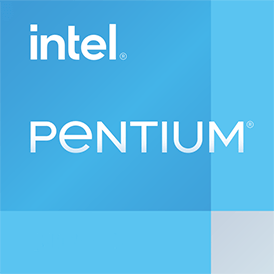
| Name: | Intel Pentium Silver N6000 |
|---|---|
| Family: | Intel Pentium (150) |
| CPU group: | Intel Pentium N6000 (2) |
| Architecture: | Jasper Lake |
| Segment: | Mobile |
| Generation: | 10 |
| Predecessor: | Intel Pentium Silver N5000 |
| Successor: | -- |
CPU Cores and Base Frequency
The Intel Pentium Silver N6000 has 4 CPU cores and can calculate 4 threads in parallel. The clock frequency of the Intel Pentium Silver N6000 is 1.10 GHz (3.30 GHz). The number of CPU cores greatly affects the speed of the processor and is an important performance indicator.
| CPU Cores / Threads: | 4 / 4 |
|---|---|
| Core architecture: | normal |
| Cores: | 4x Tremont |
| Hyperthreading / SMT: | No |
|---|---|
| Overclocking: | No |
| Frequency: | 1.10 GHz |
| Turbo Frequency (1 Core): | 3.30 GHz |
| Turbo Frequency (4 Cores): | 2.50 GHz |
Internal Graphics
The Intel Pentium Silver N6000 has integrated graphics, called iGPU for short. Specifically, the Intel Pentium Silver N6000 uses the Intel UHD Graphics 32 EUs (Jasper Lake), which has 256 texture shaders and 32 execution units. The iGPU uses the system's main memory as graphics memory and sits on the processor's die.
| GPU name: | Intel UHD Graphics 32 EUs (Jasper Lake) |
|---|---|
| GPU frequency: | 0.35 GHz |
| GPU (Turbo): | 0.85 GHz |
| Compute units: | 32 |
| Shader: | 256 |
| Hardware Raytracing: | No |
| Release date: | Q1/2021 |
| Max. displays: | 3 |
|---|---|
| Generation: | 11 |
| Direct X: | 12 |
| Technology: | 10 nm |
| Max. GPU Memory: | 8 GB |
| Frame Generation: | No |
Hardware codec support
A photo or video codec that is accelerated in hardware can greatly accelerate the working speed of a processor and extend the battery life of notebooks or smartphones when playing videos.
| h265 / HEVC (8 bit): | Decode / Encode |
|---|---|
| h265 / HEVC (10 bit): | Decode / Encode |
| h264: | Decode / Encode |
| VP8: | Decode / Encode |
| VP9: | Decode / Encode |
| AV1: | No |
|---|---|
| AVC: | Decode / Encode |
| VC-1: | Decode |
| JPEG: | Decode / Encode |
Memory & PCIeThe processor can use up to 16 GB memory in 2 (Dual Channel) memory channels. The maximum memory bandwidth is 46.9 GB/s. The memory type as well as the amount of memory can greatly affect the speed of the system. |
|
| Memory type: | Memory bandwidth: |
|---|---|
| DDR4-2933 | 46.9 GB/s |
| Max. Memory: | 16 GB |
| Memory channels: | 2 (Dual Channel) |
| ECC: | No |
| PCIe: | 3.0 x 8 |
| PCIe Bandwidth: | 7.9 GB/s |
Thermal ManagementThe thermal design power (TDP for short) of the processor is 6 W. The TDP specifies the necessary cooling solution that is required to cool the processor sufficiently. The TDP usually gives a rough idea of the actual power consumption of the CPU. |
|
|---|---|
| TDP (PL1 / PBP): | 6 W |
| TDP (PL2): | 20 W |
| TDP up: | -- |
| TDP down: | 4.8 W |
| Tjunction max.: | 105 °C |
Technical details
The Intel Pentium Silver N6000 is made in 10 nm. The smaller the manufacturing process of a CPU, the more modern and energy-efficient it is. Overall, the processor has 5.50 MB cache. A large cache can greatly speed up the processor's speed in some cases such as games.
| Technology: | 10 nm |
|---|---|
| Chip design: | Monolithic |
| Socket: | BGA 1338 |
| L2-Cache: | 1.50 MB |
| L3-Cache: | 4.00 MB |
| AES-NI: | Yes |
| Operating systems: | Windows 10, Windows 11, Linux |
| Virtualization: | VT-x, VT-x EPT, VT-d |
|---|---|
| Instruction set (ISA): | x86-64 (64 bit) |
| ISA extensions: | SSE4.1, SSE4.2 |
| Release date: | Q1/2021 |
| Release price: | -- |
| Part Number: | -- |
| Documents: | Technical data sheet |
Rate this processor
Benchmark results

The benchmark results for the Intel Pentium Silver N6000 have been carefully checked by us. We only publish benchmark results that have been created by us or that have been submitted by a visitor and then checked by a team member. All results are based on and fullfill our benchmark guidelines.
Cinebench R23 (Single-Core)
Cinebench R23 is the successor of Cinebench R20 and is also based on the Cinema 4 Suite. Cinema 4 is a worldwide used software to create 3D forms. The single-core test only uses one CPU core, the amount of cores or hyperthreading ability doesn't count.
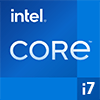
|
Intel Core i7-2860QM
4C 8T @ 3.60 GHz |
||

|
Intel Processor N200
4C 4T @ 3.70 GHz |
||
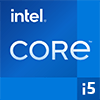
|
Intel Core i5-3470
4C 4T @ 3.60 GHz |
||
|
|
Intel Pentium Silver N6000
4C 4T @ 3.30 GHz |
||

|
Intel Core i5-4210M
2C 4T @ 3.20 GHz |
||

|
Intel Core i5-5250U
2C 4T @ 2.70 GHz |
||

|
Intel Core i5-4590T
4C 4T @ 3.00 GHz |
||
Cinebench R23 (Multi-Core)
Cinebench R23 is the successor of Cinebench R20 and is also based on the Cinema 4 Suite. Cinema 4 is a worldwide used software to create 3D forms. The multi-core test involves all CPU cores and taks a big advantage of hyperthreading.

|
Intel Core i7-6500U
2C 4T @ 2.80 GHz |
||

|
AMD A10-9700
4C 4T @ 3.50 GHz |
||

|
Intel Core i5-6300U
2C 4T @ 2.60 GHz |
||
|
|
Intel Pentium Silver N6000
4C 4T @ 2.50 GHz |
||

|
Intel Core i5-5287U
2C 4T @ 3.30 GHz |
||
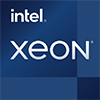
|
Intel Xeon E5450
4C 4T @ 3.00 GHz |
||

|
Intel Core i5-4200M
2C 4T @ 3.10 GHz |
||
Geekbench 5, 64bit (Single-Core)
Geekbench 5 is a cross plattform benchmark that heavily uses the systems memory. A fast memory will push the result a lot. The single-core test only uses one CPU core, the amount of cores or hyperthreading ability doesn't count.

|
Intel Core i7-3630QM
4C 8T @ 3.40 GHz |
||
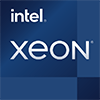
|
Intel Xeon E7-4890 v2
15C 30T @ 3.40 GHz |
||
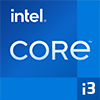
|
Intel Core i3-4170T
2C 4T @ 3.20 GHz |
||
|
|
Intel Pentium Silver N6000
4C 4T @ 3.30 GHz |
||

|
Intel Xeon D-1520
4C 8T @ 2.60 GHz |
||

|
Intel Core i5-7442EQ
4C 4T @ 2.90 GHz |
||
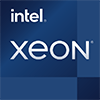
|
Intel Xeon E5-2620 v3
6C 12T @ 3.20 GHz |
||
Geekbench 5, 64bit (Multi-Core)
Geekbench 5 is a cross plattform benchmark that heavily uses the systems memory. A fast memory will push the result a lot. The multi-core test involves all CPU cores and taks a big advantage of hyperthreading.

|
Intel Pentium J6426
4C 4T @ 2.00 GHz |
||
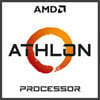
|
AMD Athlon PRO 300U
2C 4T @ 2.40 GHz |
||

|
MediaTek Dimensity 7020
8C 8T @ 2.20 GHz |
||
|
|
Intel Pentium Silver N6000
4C 4T @ 2.50 GHz |
||

|
Intel Core i5-6287U
2C 4T @ 3.30 GHz |
||

|
Intel Core i7-6498DU
2C 4T @ 2.80 GHz |
||

|
Intel Core i5-4340M
2C 4T @ 3.50 GHz |
||
Geekbench 6 (Single-Core)
Geekbench 6 is a benchmark for modern computers, notebooks and smartphones. What is new is an optimized utilization of newer CPU architectures, e.g. based on the big.LITTLE concept and combining CPU cores of different sizes. The single-core benchmark only evaluates the performance of the fastest CPU core, the number of CPU cores in a processor is irrelevant here.

|
Intel Core i5-4200Y
2C 4T @ 1.90 GHz |
||

|
Intel Core i5-2320
4C 4T @ 3.30 GHz |
||

|
Intel Core i7-3555LE
2C 4T @ 3.20 GHz |
||
|
|
Intel Pentium Silver N6000
4C 4T @ 3.30 GHz |
||

|
Intel Core i7-3612QM
4C 8T @ 3.10 GHz |
||
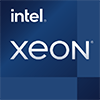
|
Intel Xeon X3440
4C 8T @ 2.93 GHz |
||

|
Intel Core i3-2130
2C 4T @ 3.40 GHz |
||
Geekbench 6 (Multi-Core)
Geekbench 6 is a benchmark for modern computers, notebooks and smartphones. What is new is an optimized utilization of newer CPU architectures, e.g. based on the big.LITTLE concept and combining CPU cores of different sizes. The multi-core benchmark evaluates the performance of all of the processor's CPU cores. Virtual thread improvements such as AMD SMT or Intel's Hyper-Threading have a positive impact on the benchmark result.
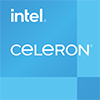
|
Intel Celeron G5900
2C 2T @ 3.40 GHz |
||

|
Intel Core i3-3240
2C 4T @ 3.40 GHz |
||

|
Intel Core i7-3687U
2C 4T @ 3.30 GHz |
||
|
|
Intel Pentium Silver N6000
4C 4T @ 2.50 GHz |
||

|
Intel Core i3-4025U
2C 4T @ 1.90 GHz |
||

|
Intel Core i3-4030U
2C 4T @ 1.90 GHz |
||

|
Intel Pentium G4400
2C 2T @ 3.30 GHz |
||
Cinebench R20 (Single-Core)
Cinebench R20 is the successor of Cinebench R15 and is also based on the Cinema 4 Suite. Cinema 4 is a worldwide used software to create 3D forms. The single-core test only uses one CPU core, the amount of cores or hyperthreading ability doesn't count.

|
Intel Core i5-4430
4C 4T @ 3.20 GHz |
||

|
Intel Core i5-5300U
2C 4T @ 2.90 GHz |
||

|
Intel Core i7-4600U
2C 4T @ 3.30 GHz |
||
|
|
Intel Pentium Silver N6000
4C 4T @ 3.30 GHz |
||

|
Intel Pentium Silver N6005
4C 4T @ 3.30 GHz |
||

|
Intel Core i5-5257U
2C 4T @ 3.10 GHz |
||

|
Intel Core i5-6400
4C 4T @ 3.30 GHz |
||
Cinebench R20 (Multi-Core)
Cinebench R20 is the successor of Cinebench R15 and is also based on the Cinema 4 Suite. Cinema 4 is a worldwide used software to create 3D forms. The multi-core test involves all CPU cores and taks a big advantage of hyperthreading.

|
AMD Athlon 220GE
2C 4T @ 3.40 GHz |
||

|
Intel Core i5-7300U
2C 4T @ 3.50 GHz |
||

|
AMD FX-8100
8C 8T @ 3.70 GHz |
||
|
|
Intel Pentium Silver N6000
4C 4T @ 2.50 GHz |
||

|
AMD A12-9800
4C 4T @ 3.80 GHz |
||

|
AMD Athlon 200GE
2C 4T @ 3.20 GHz |
||
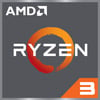
|
AMD Ryzen 3 3250U
2C 4T @ 2.60 GHz |
||
iGPU - FP32 Performance (Single-precision GFLOPS)
The theoretical computing performance of the internal graphics unit of the processor with simple accuracy (32 bit) in GFLOPS. GFLOPS indicates how many billion floating point operations the iGPU can perform per second.
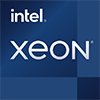
|
Intel Xeon E3-1225 v5
Intel HD Graphics P530 @ 1.20 GHz |
||

|
Intel Xeon E-2276G
Intel UHD Graphics P630 @ 1.20 GHz |
||

|
Intel Xeon E-2276M
Intel UHD Graphics P630 @ 1.20 GHz |
||
|
|
Intel Pentium Silver N6000
Intel UHD Graphics 32 EUs (Jasper Lake) @ 0.85 GHz |
||

|
Intel Pentium J6426
Intel UHD Graphics 32 EUs (Elkhart Lake) @ 0.85 GHz |
||
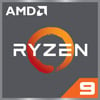
|
AMD Ryzen 9 7940HX
AMD Radeon 610M @ 2.20 GHzNot verified |
||

|
AMD Ryzen 9 7945HX3D
AMD Radeon 610M @ 2.20 GHz |
||
Estimated results for PassMark CPU Mark
Some of the CPUs listed below have been benchmarked by CPU-monkey. However the majority of CPUs have not been tested and the results have been estimated by a CPU-monkey’s secret proprietary formula. As such they do not accurately reflect the actual Passmark CPU mark values and are not endorsed by PassMark Software Pty Ltd.

|
Intel Core i5-4210H
2C 4T @ 2.90 GHz |
||

|
Intel Core i3-4160T
2C 4T @ 3.10 GHz |
||

|
Intel Core i5-5287U
2C 4T @ 3.30 GHz |
||
|
|
Intel Pentium Silver N6000
4C 4T @ 2.50 GHz |
||

|
Intel Core i7-880
4C 8T @ 3.06 GHz |
||

|
Intel Core i5-4200H
2C 4T @ 2.80 GHz |
||

|
Intel Core i5-4310M
2C 4T @ 3.30 GHz |
||
Benchmarks

Cinebench R23 (SC)
586 entries
586 entries

Cinebench R23 (MC)
565 entries
565 entries

Geekbench 5 (SC)
2,488 entries
2,488 entries

Geekbench 5 (MC)
2,461 entries
2,461 entries

Geekbench 6 (SC)
1,755 entries
1,755 entries

Geekbench 6 (MC)
1,703 entries
1,703 entries

Cinebench R20 (SC)
656 entries
656 entries

Cinebench R20 (MC)
604 entries
604 entries

FP32 SP (iGPU)
2,026 entries
2,026 entries

3DMark Timespy (iGPU)
512 entries
512 entries
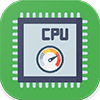
PassMark CPU-Mark
2,392 entries
2,392 entries
Description of the processor
The Intel Pentium Silver N6000 is a 4-core processor without hyper-threading (maximum 4 threads), which is based on Intels newly developed "Jasper Lake" architecture. Its clock frequency is very low 1.1 GHz. However, this can lift the processor as long as it allows energy consumption and temperature. In the so-called turbo mode, the processor then reaches 2.5 GHz on all cores or up to 3.1 GHz if only one core is claimed.Jasper Lake is the successor of Gemini-Lake or Gemini-Lake Refresh. His new tremont cores are much faster than in its predecessor. Even with the IGPU (internal graphics), Intel has donated the Intel Pentium Silver N6000 the new Tiger Lake graphics, though only in a fairly small expansion stage with 48 execution units or 384 shaders. For PC games, the Intel Pentium Silver N6000 is suitable as well as so not, its purpose of use is smaller servers or NAS systems in addition to office computers or notebooks.
With a TDP of only 6 watts, the processor manufactured in 10 Nm is even more economical than the already economical Gemini-Lake processors. In the short term, the processor in the PL2 state may raise its TDP BI Sauf 20 watts. Due to the low energy absorption or waste heat, the processor can be passively cooled.
New is also an improved equipment on PCIe 3.0 lines. Up to 12 lines are now available in standard 3.0. In addition to SATA ports, M.2 slots or network cards (also 10 GB / s) can be connected.
The Intel Pentium Silver N6000 supports up to 32 GB of type LPDDR4-2933 Memory in two memory channels. Very probably the processor can also deal with DDR4-2666 SO-DIMM Memory. The ECC error correction method of the memory is not supported. This is a pity with regard to use in small servers or NAS systems.
Popular comparisons
back to index




